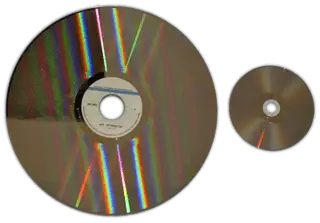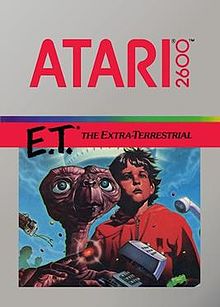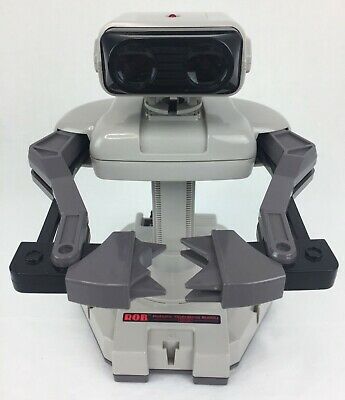
Not only was it the must-have accessory if you wanted to take your music on the go, but it is also responsible for the rise of Hip Hop culture
The Ghetto Blaster, or Boombox, was a portable music player and transistor that had at least one cassette deck. You could record and play music on them with the larger ones producing high volume. They became part of urban culture and play a key role in the launch and evolution of hip hop.
Before Alexa, Siri, Bluetooth, or any portable speakers, there was the Ghetto Blaster or Boombox. This wasn’t just used to play music, it was a statement. The Ghetto Blaster was an identity that showed who you were, the music you liked, and the culture you were a part of. They also look aggressive as hell.
The bigger the Boombox, the bigger the persona, and they became mainstays at any outdoor event. You could take the party with you and EVERYONE could hear it. It was part instrument, part status symbol, and part cultural identity.
This is a look back on the Boombox or if you referred to it like me, The Ghetto Blaster
Setting The Stage For The Boombox
I wanted a Ghetto Blaster more than life itself. But not only would I never be able to get one, I probably never had the guts to even take one out in public. My musical love in the 80s was hip hop, but probably not as hardcore as others.
I did like the classics such as:
- Run DMC
- LL Cool J
- Kool Moe D
- Ice T
But I was also listening to Young MC, MC Hammer, and DJ Jazzy Jeff and the Fresh Prince. That probably wouldn’t have gone over well at any block parties.
I ended up getting a Boombox eventually, but it was like a Boombox that had been hit by a shrinking ray. It was one of those black Casio type ones that looked non-threatening and the amp power of a coughing church mouse.
The real Boomboxes, on the other hand, have a history that goes into the 70s, before they became more prominent in the 80s.
What Is A Boombox?
You can obviously picture what a Boombox or Ghetto Blaster looks like, but what are the components that make it what it is? A Boombox is technically:
- At least two loudspeakers
- An Amplifier
- A radio tuner
- A cassette player
You wrap all this up into a plastic or metal case, slap a handle on it and you’re ready to go. All good Boomboxes also can be powered by AC or DC cables, but can still run off batteries. You may remember the odd giant one being powered by a car battery.
To me, the thing that determines if a portable tape player is indeed a Boombox or Ghetto Blaster is that it’s made of metal or at least has that chrome look. This was the main design of Boomboxes in the 80s. Thanks to Sony, black became more of the aesthetic for technology going into the 90s, so the golden age of Boomboxes would have that metal look to them,
Then there was the battery issue. Boomboxes were notorious battery hogs and the bigger ones would require up to 10 D batteries. If you remember those old D’s, ten or more of them could make the entire unit weigh up to 26 pounds.
Speaking of the car battery, some units could take a sealed 12-volt lead-acid battery, or be swapped out for what’s under the hood of your dad’s Oldsmobile.
The First Boomboxes and Ghetto Blasters
Various forms of portable radios have gone back to the late 1930s. But the first Boombox as we know it was created by Phillips in 1966. It was called the “Radiorecorder” and it was the first time a machine had a tape player that could record off the radio.
The sound quality was pretty sketchy, but, at the same time, Boomboxes were being developed in Japan. The Japanese versions were more innovative and had better technology and sound. As the late 70s rolled around, different manufacturers were finetuning what a Boombox could be. Companies like Sony, Panasonic, and GE were creating a great crossover between a home stereo and a portable radio.
The main thing that all of the different models had in common was their ability to crank out the volume. Besides having an AM/FM tuner, the biggest inclusion – which was fundamental to the rise of hip hop – was the adding of input and output jacks. This meant things like microphones and turntables could be plugged into them.
What you now had was a portable television studio. Sorry, that’s Doc Brown talking. What you now had was a portable concert that had enough volume for a whole street.
The Rise Of Hip Hop
Some people overlook this, but the rise of the Boombox was instrumental in the rise of hip-hop. And this is probably due to cassette tapes. Cassettes existed in a post vinyl, pre-CD, era and a lot of music – especially hip hop – was traded around by cassette.
Cassettes were perfect. They were small, transportable, cheap and sounded ok. The only problem is the dread of the tape coming out and having to use a pencil to wind it back in.
The other amazing thing with cassettes is that you could now record yourself and make your own music. This could be as simple as signing into the microphone of a tape player. Cassettes basically meant that you could create your own home recordings and not necessarily have to go to a professional studio.
DJs used the advent of cassettes to now be able to record any of their live sessions and performances. These tapes could now be spread around New York City after hip hop started emerging in the Bronx.
You could record straight from the mixing board at any party or from in your own room. Basically, if it wasn’t for cassettes, hip hop would not have been as able to be easily spread around New York.
Hip Hop was brand new in the early 80s and if you lived in other parts of New York, the only time you might have heard it was if someone happened to get their hands on a cassette from a party or performance. Hip hop captured the imagination of so many people and the Ghetto Blaster allowed for those live performances to be taken and played anywhere
LL Cool J’s Love Letter To The Boombox
In regards to hip hop, a song called “I Can’t Live Without My Radio” by LL Cool J was released in 1986. It not only spoke about how the Boombox was part of life but of hip hop life. He named manufacturer JVC and used this song to share the importance of what the Ghetto Blaster meant to those in hip hop.
Here are a few lyrics to demonstrate this:
“I’m sorry if you can’t understand
But I need a radio inside my hand
Don’t mean to offend other citizens
But I kick my volume way past 10
My radio, Believe me, I like it loud
I’m the man with the box that can rock the crowd
Walkin down the street to the hardcore beat
While my JVC vibrates the concrete”
Songs like this put the ‘boom’ in Boombox. These giant radios could really pump out the bass, and since hip hop has a big focus on bass, the Boombox was the perfect delivery system.
The Boombox would also be a staple item to groups like the Beastie Boys and made appearances in movies like Fame, and Flashdance. It also has an iconic appearance at the end of the movie “Say Anything” where “In Your Eyes” by Peter Gabriel plays over the head of character Lloyd Dobler. (why the hell is Lloyd spelled with two ‘L’s’s. I never can get over that).
A Soundtrack To The Streets
Thanks to the Boombox or Ghetto Blaster, quick parties, dance-offs, or battles could take place at any time and anywhere. You didn’t need to set up speakers, mixers, cables or amps. You also didn’t need any ac outlets, you just placed your Boombox down and went at it.
They would become one of the symbols of urban culture in the 80s, and as popular as the Walkman would get, it catered to all types of music. With the Boombox, it was pretty much just about hip hop and heavy metal.
With hip hop, breakdance battles and MC battles were the main way to show your abilities amongst your peers. There was no way to showcase your talents on a YouTube channel or social media, so if you wanted to show that you could rhyme, you had to showcase it in public. The Boombox allowed for this to happen.
IN the case of hip hop, cities began to ban them in public places. They would become less acceptable on city streets but their easy transportability meant the party could be picked up and quickly moved to a new location.
The Demise Of The Boombox and Ghetto Blaster
It’s not that the Boombox faded because they got worse -far from it, as the technology got better, but wasn’t capturing the spirit of what came before it. Like anything that makes a splash – including hip hop itself – it becomes a little mainstream and this can lead to it getting watered down.
When you look at the second and third-generation versions of objects they start to add too many bells and whistles to avoid the risk of not being the latest and greatest. This same issue faced the Boombox.
New editions now came out with equalizers (that probably didn’t do anything) graphic displays and sound level indicator lights. Some boxes would be slapped with the label ‘jumbo’ on it, in case you couldn’t see for yourself how big this thing was.
They then started adding CD players to them and the Boombox started to emerge as a high-tech device and far removed from the origination of what it once was.
The height of the Boombox would be in the mid to late 80s, but at this point, the stigma attached to them, the potential fines and issues of street noise made carrying a Boombox a bit of a stigma. At this point, however, the Walkman was really coming into its own. You could at least still enjoy your music without disturbing anyone – and they were A LOT cheaper.
And it only took two AA batteries and not 16 giant D batteries, or worse yet, a car battery… Check out my article all about the rise of the Walkman and how it changed the way we consume music.
The Walkman was interesting as it was the start of an era when music began to go inward. It would lead to the Discman, MP3 players, the iPod, and then your phone which is the only way we pretty much listen to music now.
Music now is a personal and private experience which the Walkman helped solidify, where the Boombox was more about community, gatherings, and a shared experience. You can take that for what it is, for better or for worse, but an era definitely ended when the Walkman took over,
You can also see this in the same way arcades fell by the wayside for private gaming at home.
Final Thoughts On The Boombox

The Boombox still exists but has evolved into a modern version of it – and you might be reading this article on it right now. The phone has become not just a music player, but the device for all content rolled into one.
It holds thousands of songs that can be accessed instantly. Music continues to be that deeply personal experience, but will a time return when people go back to that shared collective experience with portable music?
Bluetooth speakers have helped this because gatherings of people will always demand music. Some of these new Bluetooth devices even encompass designs of past Ghetto Blasters as a way to relive an era that most people never got to experience.
But that’s the story of the Boombox and how they became the ghetto blaster. They were critical in the advent of hip hop and were a big part of the urban identity. A bad stigma became attached to them and people were unfairly targeted, even though it was just about sharing their music. Music is a form of self-expression, so all the hate and laws surrounding Boomboxes in public did have that ring of suppressing culture and personal identity.
The Boombox was the vehicle that launched a whole new art form and is no-doubt an iconic, and important, symbol of the 80s.
So if you want to keep a piece of the 80s, but with a modern twist, check out this amazing Ghetto Blaster-style Bluetooth Boombox on Amazon.
This is an Amazon affiliate link which helps me out at no cost to you. Seriously, this thing is awesome, it even has a working cassette player (dust off those old mixtapes) and AM/FM tuner.
And if you want toc heck out a few more of my blogs related to 80s music, here are a few beatuties for you:




Comments
Comments are closed.